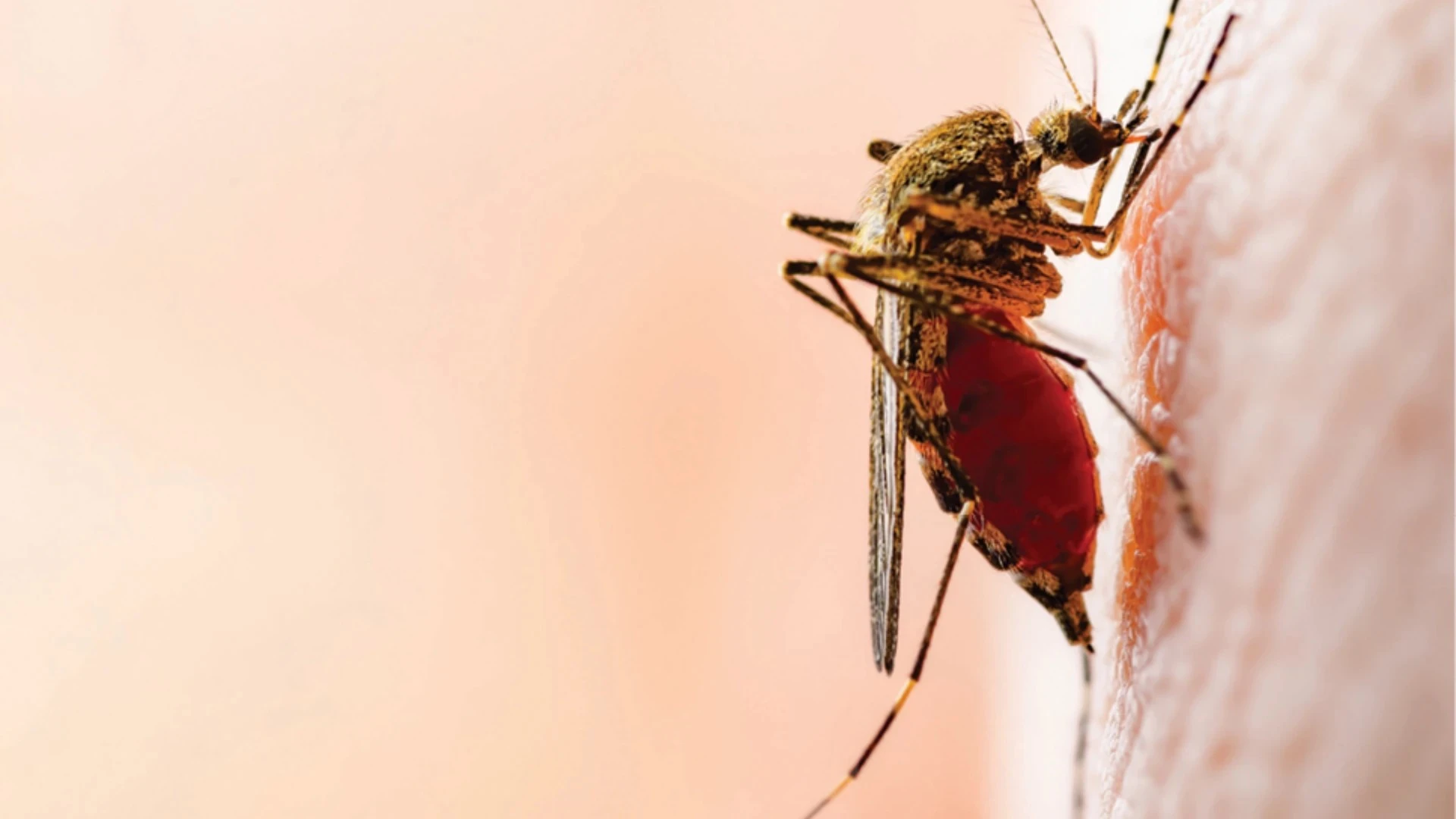
When it comes to insecticides, the broader the label the better. That’s been the view of pest management professionals for decades; one that’s about to get up-ended.
New biopesticide products — microbials, genetically modified organisms and products using RNA interference — are being fast-tracked thanks to advancements in technology that have opened the doors to development.
These products promise to control pests more effectively and with less risk to non-target organisms (birds, mammals), beneficial insects and the environment by harnessing the power of fungi and bacteria, by modifying insects to use like Trojan horses and even by disrupting how insect genes work.
As a result, they’re super-specific with the ability to target not just mosquitoes, for instance, but a particular mosquito species.
Nor are these insecticides decades away from commercialization. In fact, they’ll likely be available within years; some are entering the marketplace now.
That doesn’t mean conventional chemistries and enabling technologies like bait and delivery systems will go away, said Michael Scharf, an entomologist at Purdue University. “I do believe, however, that having these additional tools will open up market niches and give the industry more chances to be effective in fewer visits,” he said.
A Fungus that Kills Bed Bugs
A microbial biopesticide called Aprehend uses the fungus Beauveria bassiana to kill bed bugs. It is available in 49 states with regulatory approval in California and Canada expected in 2019.
The fungus is a natural disease of insects and it’s been used in agricultural and horticultural products to control aphids, whiteflies and thrips for more than 20 years. But it didn’t make its structural pest control debut until Penn State entomologist Nina Jenkins proved its efficacy on bed bugs and paired it with a special formulation for indoor use that she developed over three decades.
It starts working on contact when bed bugs pick up fungal spores by walking through strategically treated areas, such as bed legs, box springs and where baseboards meet walls. The spores readily germinate on the insect’s cuticle, penetrate into its blood system and begin to grow, using the blood as a food source. The bed bugs start dying in three days; most are dead within seven days.
The oil-based formulation sticks the spores to surfaces and keeps them from drying out, allowing for a three-month residual. It also helps spores work their way into the softer membranes of the bed bug cuticle and traps moisture generated by the insect’s respiration, which assists with spore germination. Because the pests immediately start grooming after contact with the spores, “they even rub the stuff into their compound eyes, so that’s another soft entrance point for the fungus to go in,” said Jenkins. The spores easily transfer among bed bugs packed tightly in harborages, which spreads the fungal disease throughout the population.
Aprehend requires fewer applications than conventional chemicals (generally one versus two or three), and “it does allow you to use a completely non-chemical approach” in controlling the pests, said Jenkins. PMPs who are following the label have achieved “incredible success” in bed bug control, she said.
Jenkins plans to introduce a similar fungus-based product to control flies in animal production facilities. Another area of development is controlling malaria-carrying mosquitoes.
Mosquitoes that Control Mosquitoes
Coming soon is the day when controlling mosquitoes will be done with…mosquitoes.
In fact, MosquitoMate based in Lexington, Ky., received U.S. EPA approval last November to sell Wolbachia-infected Aedes albopictus (Asian tiger) mosquitoes in the District of Columbia and 20 states.
Wolbachia is a naturally occurring bacterium commonly found in insects but not in certain species of mosquito. When the infected males mate with wild female mosquitoes, the resulting eggs do not hatch, which ultimately crashes the population. The company offered its mosquito control service to homeowners in Lexington last summer and is exploring ways to work with PMPs for the 2019 mosquito season.
In addition, MosquitoMate recently completed field trials of its Wolbachia-infected male Aedes aegypti mosquitoes, which were released in the city of South Miami. Jimmy Mains, the company’s chief scientific officer (who began this research as a Ph.D. candidate at University of Kentucky), is still analyzing the results of the trial but “we’re very enthusiastic with what we’re seeing” in terms of control.
The company also is developing a new technology that involves dusting adult male mosquitoes with the Insect Growth Regulator pyriproxyfen. When released into the wild, the dusted male mosquitoes transfer the IGR to breeding sites and to females, who likewise introduce it to breeding sites when they lay their eggs. Field trials have shown “significant declines in adult population densities” of mosquitoes, said Mains, who plans to submit this technology for EPA registration in late 2018.
Other companies are using genetic engineering to control mosquitoes. Oxitec of Milton Park, U.K., is testing the effectiveness of sterile male Aedes aegypti mosquitoes that were released in the Florida Keys. These mosquitoes, sterilized using genetic controls, compete with wild males for female insects. If a female mates with a sterile male, it will have no offspring, thus reducing the next generation’s population.
The company also is developing a new strain of self-limiting Anopheles mosquito to combat the spread of malaria, and is engineering insects to arrest major agricultural pests like the olive fruit fly and diamondback moth.
On another front, a team of researchers from Imperial College London used gene-drive technology to crash populations of the malaria vector Anopheles gambiae in the lab within 7 to 11 generations. A gene drive is a genetic engineering technology that can spread a particular set of genes throughout a population of a specific species.
In this experiment, scientists used it to block the mosquito’s reproductive capacity and spread female infertility. Lead researcher Andrea Crisanti said it will be 5 to 10 years before mosquitoes with gene drive are tested in the wild.
Ant Bait that Disrupts Genes
Within four to five years, PMPs may be using RNAi-based baits to control ants, according to John Killmer, CEO of a St. Louis-based start-up called RNAgri.
RNAi stands for Ribonucleic Acid Interference (see sidebar below). It was discovered about 15 years ago and involves silencing very specific genes in a particular organism, in this case to kill particular species of ants.
The high level of selectivity of RNAi is both a blessing and a curse, said Killmer. “The blessing is that it is so specific that it will not harm beneficial insects or harm insects that you want to keep, like indigenous versus introduced species. The curse is that the selectivity is such that closely related species may not be killed by just one RNAi,” he explained.
As such, Killmer’s bait likely will feature more than one RNAi sequence in order to target a range of household ants, such as Argentine, carpenter, Pharaoh and odorous house ants, as well as fire ants. He sees the bait formulation being similar to that of current ant gel baits on the market.
RNAi molecules are sustainable and “benign from a toxicological standpoint,” which is important to homeowners with children and pets, said Killmer, who is seeking a partner to help commercialize the ant bait for professional and consumer markets. He also is collaborating with Monsanto (now Bayer) on agricultural and bee health applications.
One of Killmer’s achievements is overcoming the high cost of producing RNAi. “The first few grams of RNAi that were used in testing were tens of thousands of dollars a gram if not hundreds of thousands of dollars a gram,” he recalled. He’s since developed an efficient way to make the RNA and has reduced the cost to less than a dollar a gram.
That’s significant because RNAi is “powerful stuff,” only requiring nanogram amounts to kill insect pests, he said. Killmer also is working with a university researcher to use RNAi to control mosquito larvae.
Mixing It Up. The most effective biopesticides may be ones that combine technologies, such as RNAi plus an entomopathogen like fungi, an area the research community is pursuing with “much interest,” said Purdue’s Scharf.
His lab recently published the results of a study that screened 57 double-stranded RNA (dsRNA) sequences from the Eastern subterranean termite for possible use as an RNAi termiticide.
“We found that while a small fraction of dsRNAs are effective, none are effective at the level required for market success. The take-home message is that there is more work to do to bring the concept to reality,” he said.
The author is a frequent contributor to PCT.
WANT MORE?
Enter your email to receive our newsletters.

Explore the December 2018 Issue
Check out more from this issue and find your next story to read.
Latest from Pest Control Technology
- OvoControl Now Available in Chile
- Envu Announces Savings Programs for Pest Management Professionals
- Follow the Trail
- Carpenter Ants: Understanding the Bothersome Burrowers
- Massey Services Acquires Insight Pest Solutions of San Antonio
- Target Specialty Products Expands Sales Leadership Team
- Mosquito Joe Promotes David Price to Vice President of Strategic Growth
- Abell Pest Control Recognized as One of Canada’s Best Workplaces in 2025








